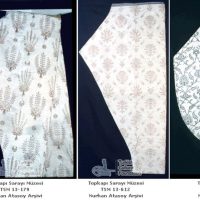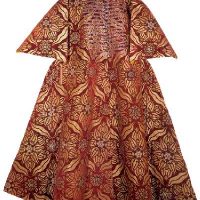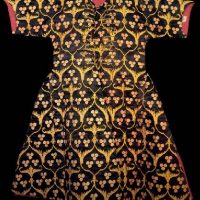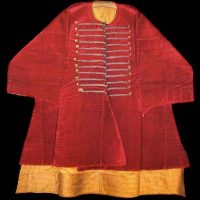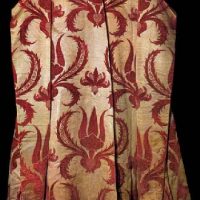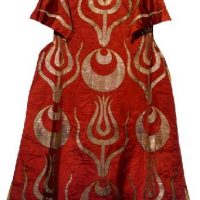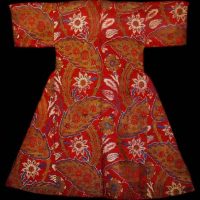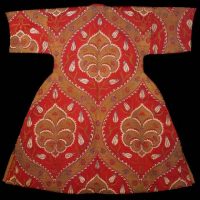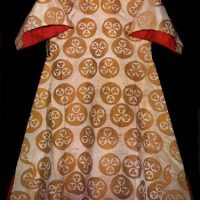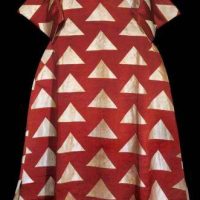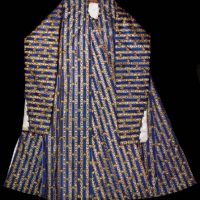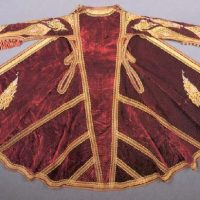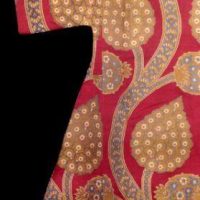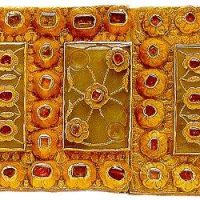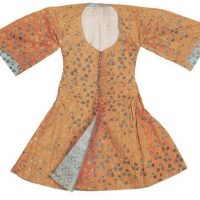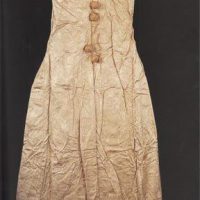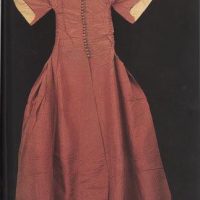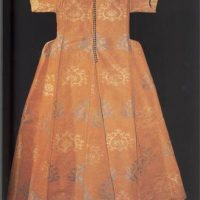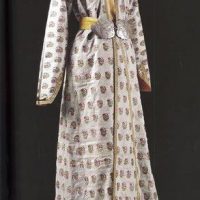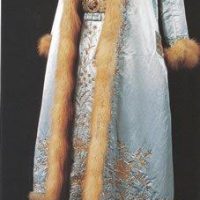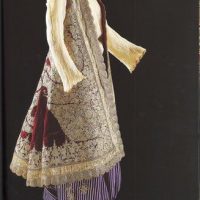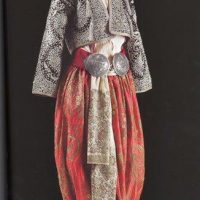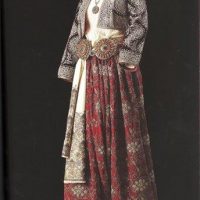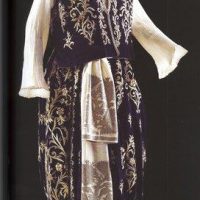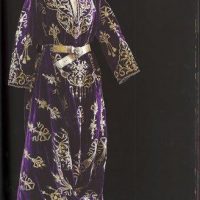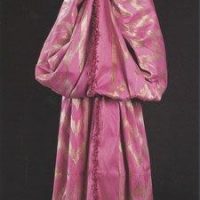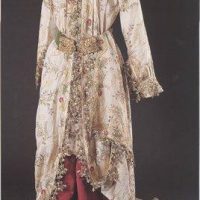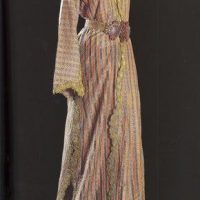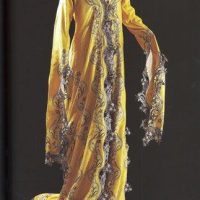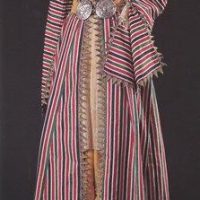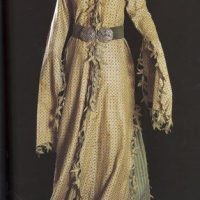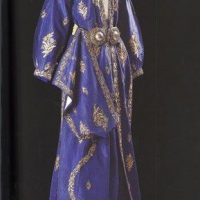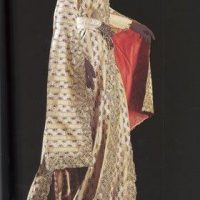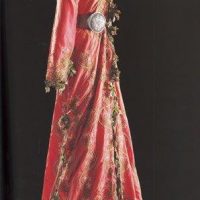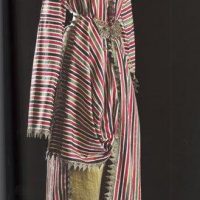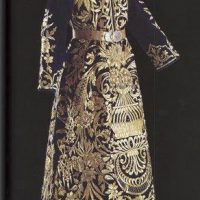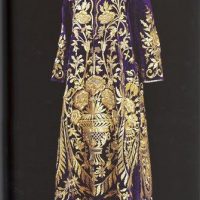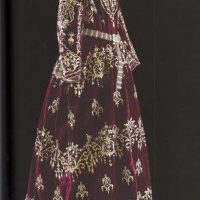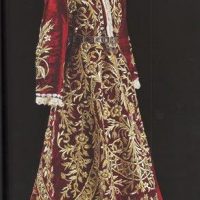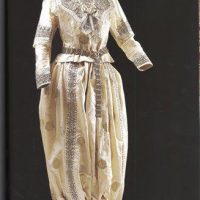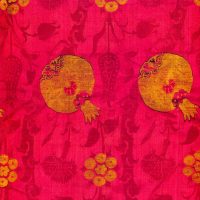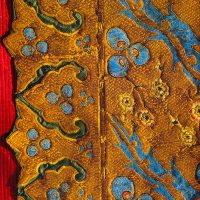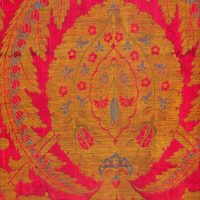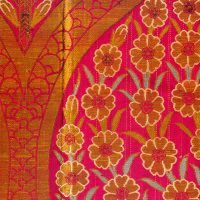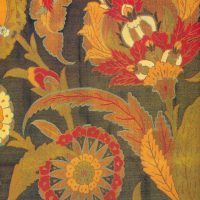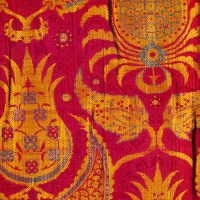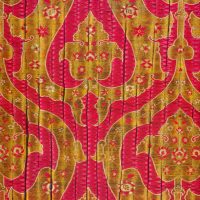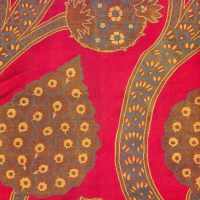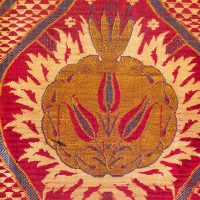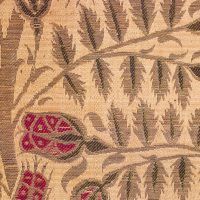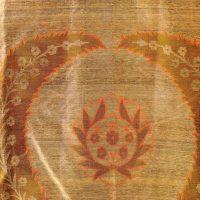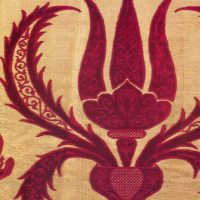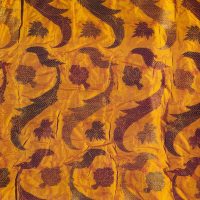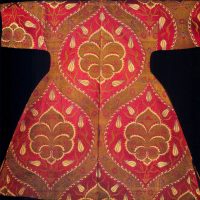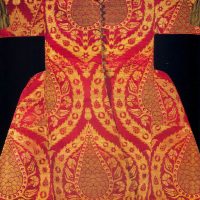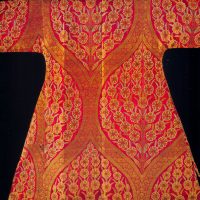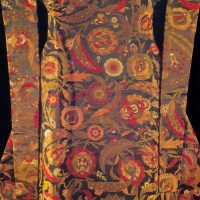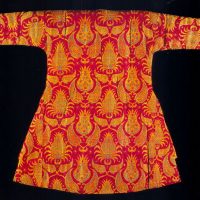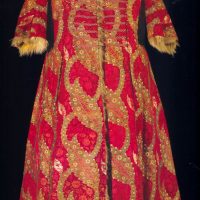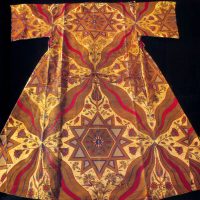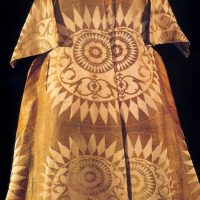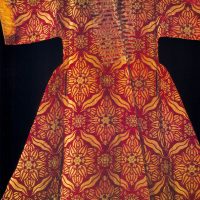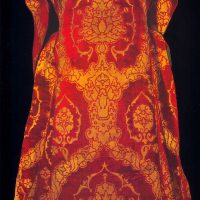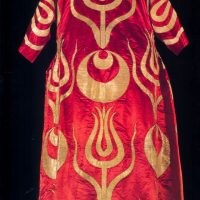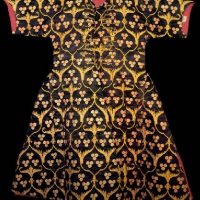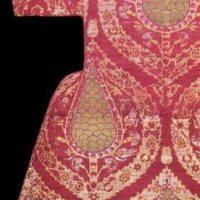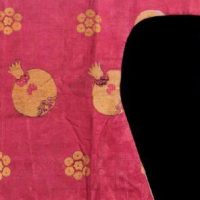В сериале Великолепный Век, османские султанши показаны нам в роскошных платьях, с шикарными украшениями переливающимися блеском красивых камней. Именно такими мы начали представлять настоящих султанш, потому что такими мы их увидели фильме. И мы все просто влюбились в сериал благодаря всему этому великолепию!
Красивые женщины и мужчины в безупречных нарядах заставили многих зрителей думать, что именно так одевалась вся османская империя при султане Сулеймане. Но на самом деле это всё хитрые уловки создателей сериала, чтобы завоевать максимальную любовь зрителей. Стоит отметить, что в Великолепном веке много неточностей не из-за того, что над ним работали глупые люди. Всё потому что им нужна была красивая картинка и захватывающий сюжет. Именно поэтому в сериале так много выдуманных моментов. Это особенно отразилось на нарядах девушек в гареме.
Но давайте мы с вами ненадолго окунёмся в ту эпоху и узнаем как на самом деле одевались Валиде, Махидевран, Хюррем, Хатидже и все остальные жидели дворца Топкапы 500 лет назад.
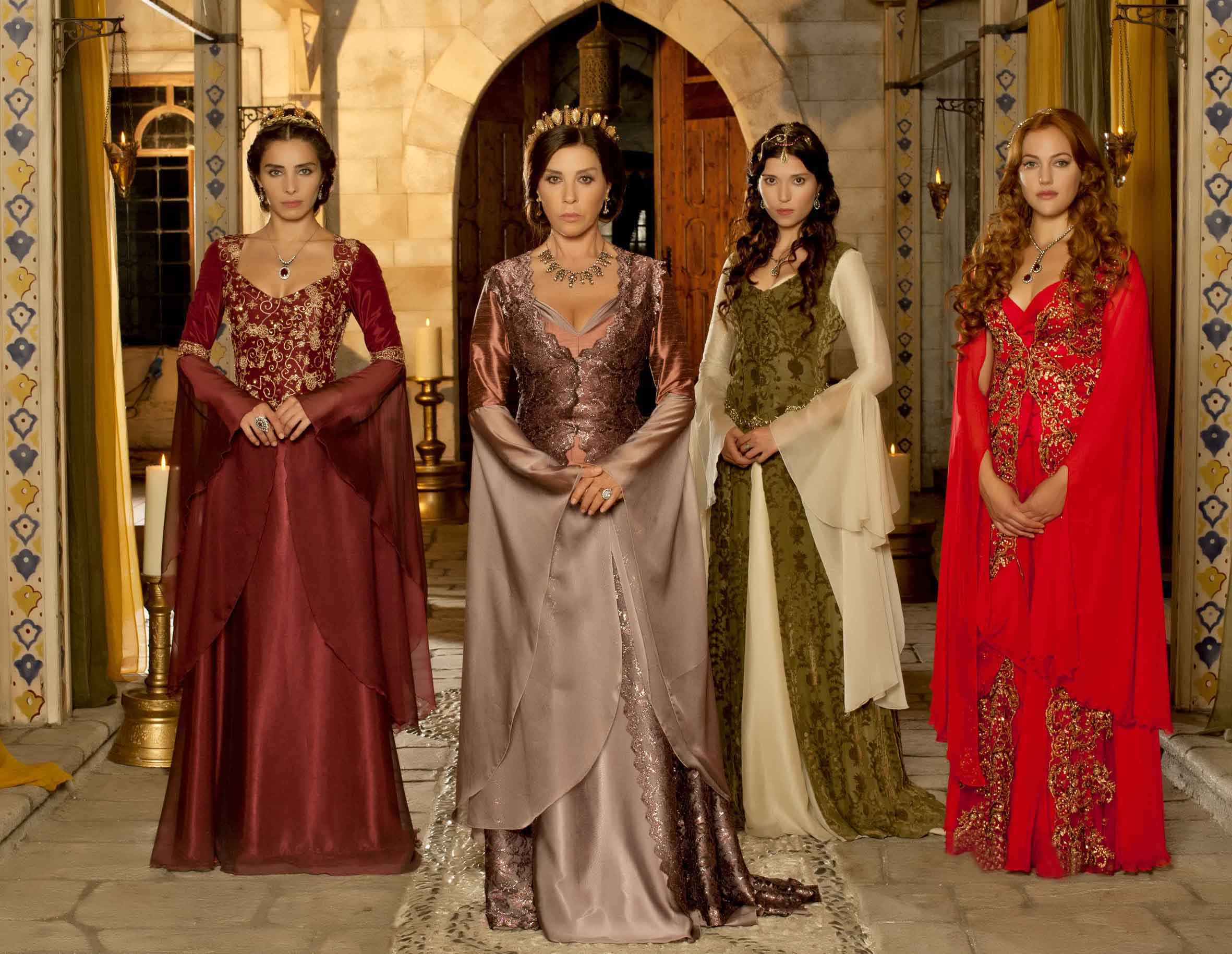
Османская империя и её настоящая мода
Османская империя в своей моде не имела столь откровенных нарядов. На самом деле султанши и наложницы падишаха выглядели совершенно по-другому. В эпоху султана Сулеймана девушки в гареме не носили облегающих платьев с разрезами, не было у них таких глубоких декольте и прозрачных юбок. В те времена мужские и женские наряды существенно почти ни чем не отличались. В основе их одежды была простая широкая однотонная (обычно белая) рубашка и шаровары. А сверху надевался кафтан.
Османские шаровары:
Мужская одежда времен султана Селима I Грозного (1512-1520)
Мужская одежда времён Сулеймана Великолепного (1520-1566)
Мужская одежда времен султана Ахмеда I (1603-1617)
Мужская одежда времен султана Махмуда I (1730-1754)
Рубашка-талисман с написанными на ней молитвами и отрывками из Корана. Могла принадлежать сыну султана Мехмеда II:
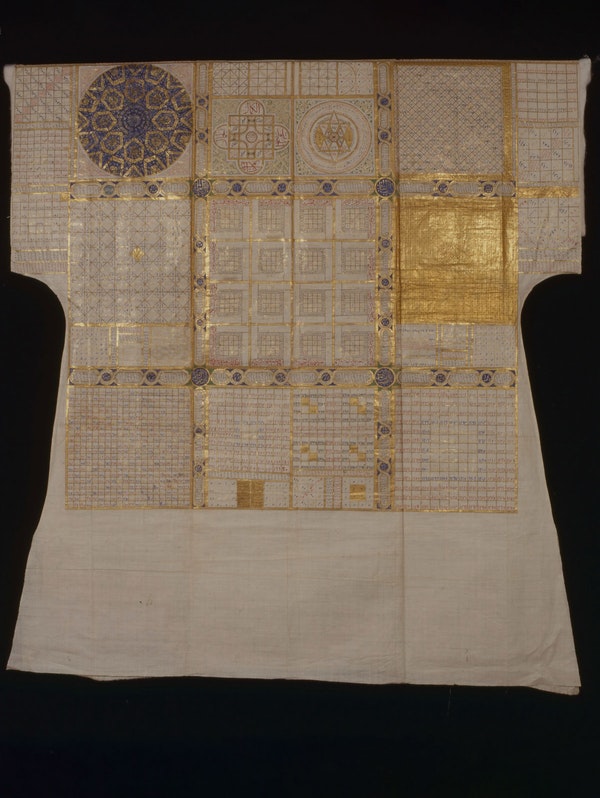
Украшенная пряжка для ремня:
Женская одежда не имела никаких вырезов, декольте и шнуровок. Тело девушки было закрыто до самой головы. Ноги девушек скрывали широкие шаровары. Платье не было приталенным и больше напоминало халат. Одежда простой рабыни в османской империи была куда скромнее, чем у калфы, фаворитки и тем более султанши. Девушки в гареме, чьё жалование было больше, могли позволить себе одежду из дорогих тканей. Так они охотно демонстрировали свой статус.
Османская империя и её женская мода:
Османская империя внутри гарема позволяла девушкам ходить с не укрытой головой. Этим они активно пользовались, ведь при скромности одеяния, красиво уложенные волосы становились единственным способом стать более привлекательной для султана. Именно поэтому девушки старательно ухаживали за своими волосами и делали себе красивые прически. Вот тут создатели сериала нас не обманули, показав нам наложниц и султанш с безукоризненными укладками. И тут я не имею ввиду прически, а тот факт, что волосам уделялось очень много внимания.

Высокий головной убор Ханзаде султан (ум. 1650 г.), дворец-музей Топкапы
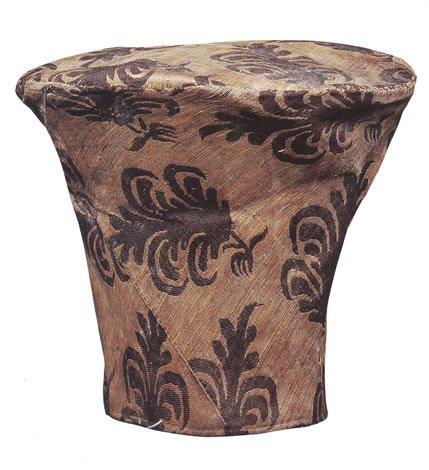
Высокий головной убор Кая Исмихан Султан (1632-1659), дворец-музей Топкапы
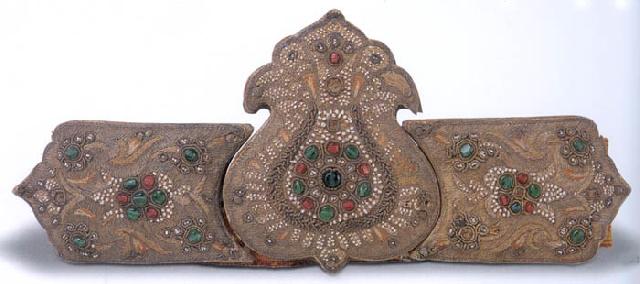
Пояс и пряжка 19-го века в форме тюльпана, расшитые крошечными жемчужинами
Женщины, принадлежавшие османской империи и султанские жены, родившие наследников, облачались в яркую одежду. В те времена цветная ткать ценилась очень дорого, поэтому позволить себе их могли только султанши.
При султане Сулеймане османская империя пребывала на пике своего процветания. Это ярко отражалось и на нарядах. Одежду для султанской семьи шили из парчи – шёлковая ткань с золотыми и серебряными нитями. Также использовали кашемир, бархат, тафту и хлопок высочайшего качества. А сами ткани привозились из-за рубежа: Венеции, Флоренции, Ирана, Индии и Китая. Шитьём гардероба для султанской династии занимались дворцовые портные, а также лучшие мастера страны.
Османская империя и её отражение в текстиле:
Чтобы сделать одежду более привлекательной, на ней золотыми нитями вышивали различные узоры. При Сулеймане стали большой популярностью пользоваться цветочные узоры. И на мужских, и на женских нарядах изображались розы, нарциссы, гиацинты, лилии, гвоздики, цветы граната. Эти цветы символизировали собой те чудесные растения, которые росли в райских садах.
В особом почёте были, конечно же, тюльпаны, как символ правящей османской династии. Все помнят, как Сулейман подарил Хюррем брошь изображающую тюльпан. И своей сестре Хатидже-Султан он подарил колье с тюльпанами на свадьбу. Изображением тюльпанов украшали даже снаряжение воинов, которые отправлялись в военный поход. Тюльпан считали священным цветком способным защитить от ранений и гибели.
Кстати говоря, Хюррем султан являлась законодательницей моды в гареме. Она сама нередко занималась шитьём одежды, которая была очень красивой в те времена. Даже девушки иногда просили её сшить для них наряд.
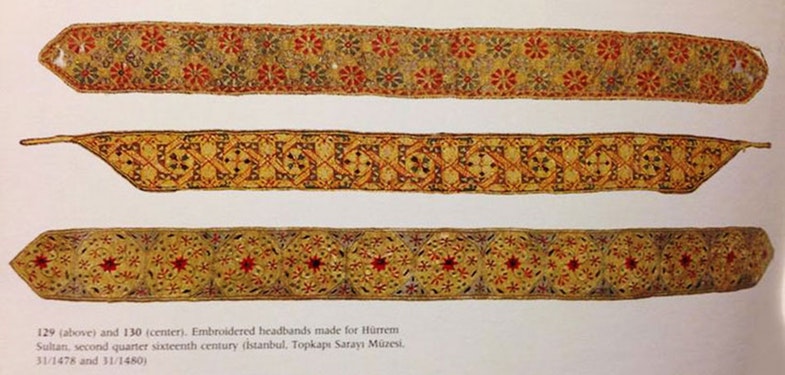
Вышитые головные уборы-повязки для Хюррем-султан, вторая четверть 16 века. Источник: Топкапы дворец-музей
Детская одежда мальчиков и девочек не имела различий и была похожа на ту, что носили взрослые. Османы того времени не разделяли цвета на мужские и женские, именно поэтому мальчики легко могли носить розовую одежду, а девочки голубую. Но чаще всего детская одежда была синего, зелёного и янтарного цвета. А самой большой популярностью пользовался красный цвет.
Османская империя и детская мода:
У султана и у его детей было по тридцать различных нарядов, по одному на каждый день месяца. Одежду шили заранее и в больших количествах, чтобы она уже была готова к нужному моменту. Для детей готовили по десять пар обуви каждый месяц.
Османские кожаные тапочки с блестками и серебряной вышивкой

Ottoman Empire and its fashion. How did the sultanas actually dress?
In the TV series Magnificent century, the Ottoman sultanas are shown to us in luxurious dresses, with chic jewelry shimmering with the sparkle of beautiful stones. This is how we began to imagine real sultanas, because this is how we saw them in the film. And we all just fell in love with the series thanks to all this splendor!
Beautiful women and men in impeccable outfits made many viewers think that this is how the entire Ottoman Empire dressed under Sultan Suleiman. But let’s briefly plunge into that era and find out how Valide, Mahidevran, Hurrem, Hatice and all the rest of the inhabitants of the Topkapi Palace actually dressed 500 years ago.
The Ottoman Empire in its fashion did not have such frank outfits. In fact, the sultans and concubines of the padishah looked completely different. In the era of Sultan Suleiman, girls in the harem did not wear tight-fitting dresses, they did not have such deep necklines and transparent skirts.
In those days, men’s and women’s outfits, essentially, almost did not differ in anything. At the heart of their clothes was a simple wide plain shirt and harem pants. And a caftan was put on top.
The Ottoman women’s dress was more like a robe. The girl’s body was covered to the very head. The girls’ legs were hidden by wide trousers.
The clothes of a simple slave in the Ottoman Empire were much more modest than those of a Kalfa, a favorite, and even more so a sultana.
Girls in the harem, whose salary was higher, could afford clothes made of expensive fabrics. So they willingly demonstrated their status.
As you can see, the clothes of the Ottoman sultanas were not as revealing as they showed us in the series. She had no cutouts, corsets and laces. This is more European fashion, where dresses emphasized the charms of the female figure. But it is worth noting that over the centuries, Ottoman fashion still changed. Their robe dresses became more feminine. In the 19th century, the outfits of the Ottoman sultana were more similar to those worn by actresses in the series. But still not so outspoken.
Inside the harem, the girls were allowed to walk with their heads uncovered. They actively used this, because with modesty attire, beautifully styled hair became the only way to become more attractive. That is why the girls diligently looked after their hair and made themselves beautiful hairstyles. Here the creators of the series did not deceive us, showing us concubines and sultanas with impeccable styling. And here I do not mean hairstyles, but the fact that a lot of attention was paid to hair.
Women who belonged to the Ottoman Empire and the sultan’s wives who gave birth to heirs dressed in bright clothes. In those days, colored fabrics were valued very dearly, so only sultanas could afford them.
Under Sultan Suleiman, the Ottoman Empire was at the peak of its prosperity. This was clearly reflected in the outfits. Clothes for the Sultan’s family were sewn from brocade. This is a silk fabric with gold and silver threads. Also used cashmere, velvet, taffeta and cotton of the highest quality. And the fabrics themselves were brought from Venice, Florence, Iran, India and China. The palace tailors, as well as the best masters of the country, were engaged in sewing a wardrobe for the Sultan’s dynasty.
To make clothes more expensive, various patterns were embroidered on it with gold threads. Under Suleiman, floral patterns became very popular. Both men’s and women’s dresses depicted roses, daffodils, hyacinths, lilies, carnations, pomegranate flowers. These flowers symbolized those wonderful plants that grew in the Gardens of Eden.
Of course, tulips were in special honor, as a symbol of the ruling Ottoman dynasty. Everyone remembers how Suleiman gave Hurrem a brooch depicting a tulip. And he gave his sister Hatice-Sultan a necklace with tulips for the wedding. Even the equipment of warriors who went on a military campaign was decorated with the image of tulips. The tulip was considered a sacred flower capable of protecting from injury and death.
By the way, Hurrem Sultan was a trendsetter in the harem. She herself was often engaged in sewing clothes, which were very beautiful in those days. Even the girls sometimes asked her to sew an outfit for them.
The Topkapi Museum contains headbands that belonged to Hürrem Sultan. It is also possible that the sultana could embroider them with her own hands.
Children’s clothes for boys and girls had no differences and were similar to those worn by adults. Most often, children’s clothes were blue, green and amber. And the most popular color was red.
The Sultan and his children had thirty different outfits, one for each day of the month. Clothes were sewn in advance and in large quantities, so that they were already ready for the right moment. Ten pairs of shoes were prepared for the children every month.
The men’s clothing of the Ottomans did not differ much from the women’s. The same caftans and bloomers. But unlike the series, the clothes of the Ottoman men were much more colorful. Then preference was given to brighter and more saturated fabrics. Ruby red with patterns in blue, green or black. Fabrics for caftans were very dense, heavy and colorful.
See for yourself. Here in front of you on the screen are men’s caftans from the time of Sultan Selim Yavuz.
And this is men’s clothing from the time of Sultan Suleiman the Magnificent.
Now you see men’s clothing from the time of Sultan Ahmed the first.
And this is the clothes of the times of Sultan Mahmud the first.
A talisman shirt with prayers and passages from the Koran embroidered on it. Could belong to the son of Sultan Mehmet II.
This is what the belt buckles looked like.
And this is a 19th century Sultan’s buckle adorned with tiny pearls.
